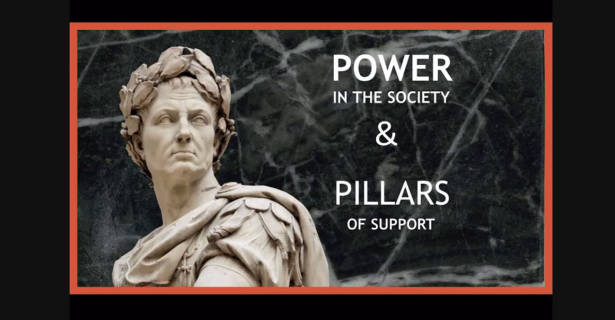The highlight of my work at the Centre for Applied Nonviolent Action and Strategies (CANVAS), so far this summer, has been attending its training workshops for activists. CANVAS, a human rights organization based in Belgrade, Serbia, researches and teaches about nonviolent civil resistance and how to form peaceful political movements. The majority of my work involves researching the tactics activists use to advance their causes and writing about civil disobedience around the globe. While this is fascinating to explore, I get an extra jolt of excitement when I get to attend a CANVAS training. CANVAS works directly with activists all over the world, from Venezuela to Vietnam, teaching them the most effective mobilization tactics and helping them create short and long-term action plans.
The first session I attended was with pro-democracy activists in Myanmar who are working to undermine the military junta that overthrew the civilian government this past February. The meeting, led by CANVAS Co-Founder Slobodan Djinovic, focused on reframing the common understanding of what political power is and how it is exercised. Most people perceive an authoritarian’s power through what is known as the Monolithic Model, Djinovic explained; they believe power is so concentrated at the top that change will only come once the leaders are displaced. However, most societies actually function through the Pluralistic Model: power resides not in one person, but between entities that interact with one another, such as civil servants, universities, the media, and the police. These pillars of support all exercise power that uphold the ruling government. Djinovic explained that the pro-democracy activists in Myanmar need to first identify the key pillars that are currently upholding the military regime in order to target and dismantle them. Understanding people’s loyalties—the reasons they obey the current regime—as well as the functioning incentive structures is a crucial first step to undermining authoritarian rule.
I hung on to every word of this session, fascinated by how reframing the perception of power opens up new pathways to effective, nonviolent resistance. At the training sessions for Fridays for Future (FFF), the international youth-led climate movement started by Greta Thunberg, I have been able to see how, over the course of a few weeks, these strategies are put into play. The young climate activists have a very different opponent than the military regime of the Myanmar activists: FFF is fighting legalized systems of behavior that enable states to avoid addressing the climate crisis. Yet, the same recruitment and mobilization strategies deployed in Myanmar can help the FFF group. For example, the activists have identified the reasons certain members of society may not be engaged in the climate crisis (e.g., they do not realize how climate change is affecting their own lives) and how to win over the loyalties of those people (by changing the messaging to highlight the specific ways climate change does impact them).
Nonviolent activism is arduous work. It takes months of planning and years of execution, and requires a sustained commitment to the cause. By helping activists build effective plans of action, CANVAS makes seemingly insurmountable tasks vincible. At these meetings, I feel both anxious and hopeful; anxious at the amount of work there is to be done, but truly hopeful that there is a nonviolent path forward. As I continue my internship with CANVAS, I am excited to keep learning from both activists and CANVAS professionals about the power and potential of collective action.

